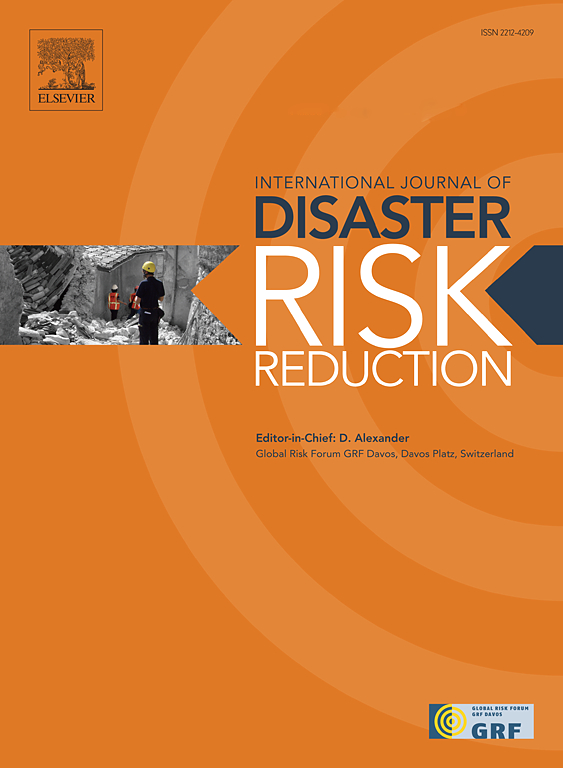How do rural households adapt to multiple natural hazards in disaster-prone areas? A case study of the Wenchuan earthquake-stricken area, China
IF 4.2
1区 地球科学
Q1 GEOSCIENCES, MULTIDISCIPLINARY
International journal of disaster risk reduction
Pub Date : 2025-01-30
DOI:10.1016/j.ijdrr.2025.105256
引用次数: 0
Abstract
Households in earthquake-stricken areas are more prone to multiple natural disasters. Although rural households' various coping and adaptation strategies have been reported worldwide, a research gap still exists regarding the multilevel drivers of adopted strategies, which hampers the efficiency of related policy making. Based on 401 household questionnaires in Wenchuan County, the epicenter of the Wenchuan earthquake on May 12, 2008, this study analyzed rural households' distinctive coping strategies during the pre-disaster, during-disaster, and post-disaster stages of multiple secondary disasters. Then a complete two-layer linear model was applied to examine the mechanisms driving different coping strategies during the three disparate stages. The results show that (1) farm households exhibited more diverse post-disaster adaptation strategies, moderate preparing strategies before disasters, and more conservative during-disaster coping approaches. (2) Household-layer factors such as natural, physical, and financial capital significantly influenced pre-disaster strategies, whereas physical capital, social capital, and disaster-related factors significantly impacted the during-disaster strategies. Human, financial, and social capital directly influenced resistance to risks and thus post-disaster decisions. (3) Village-layer factors like topographical conditions, transportation accessibility, and disaster training significantly influence coping strategies by impacting households' livelihood capital and disaster awareness. Based on these findings, the study proposes some policy measures for improving households’ coping and adaptation abilities to natural disasters at different stages. While contributing to the understanding of rural households' distinctive coping strategies to multiple secondary disasters in the Wenchuan earthquake-stricken area, the findings can also inform targeted policy making to improve disaster risk management capabilities in disaster-prone areas worldwide.
求助全文
约1分钟内获得全文
求助全文
来源期刊

International journal of disaster risk reduction
GEOSCIENCES, MULTIDISCIPLINARYMETEOROLOGY-METEOROLOGY & ATMOSPHERIC SCIENCES
CiteScore
8.70
自引率
18.00%
发文量
688
审稿时长
79 days
期刊介绍:
The International Journal of Disaster Risk Reduction (IJDRR) is the journal for researchers, policymakers and practitioners across diverse disciplines: earth sciences and their implications; environmental sciences; engineering; urban studies; geography; and the social sciences. IJDRR publishes fundamental and applied research, critical reviews, policy papers and case studies with a particular focus on multi-disciplinary research that aims to reduce the impact of natural, technological, social and intentional disasters. IJDRR stimulates exchange of ideas and knowledge transfer on disaster research, mitigation, adaptation, prevention and risk reduction at all geographical scales: local, national and international.
Key topics:-
-multifaceted disaster and cascading disasters
-the development of disaster risk reduction strategies and techniques
-discussion and development of effective warning and educational systems for risk management at all levels
-disasters associated with climate change
-vulnerability analysis and vulnerability trends
-emerging risks
-resilience against disasters.
The journal particularly encourages papers that approach risk from a multi-disciplinary perspective.
 求助内容:
求助内容: 应助结果提醒方式:
应助结果提醒方式:


